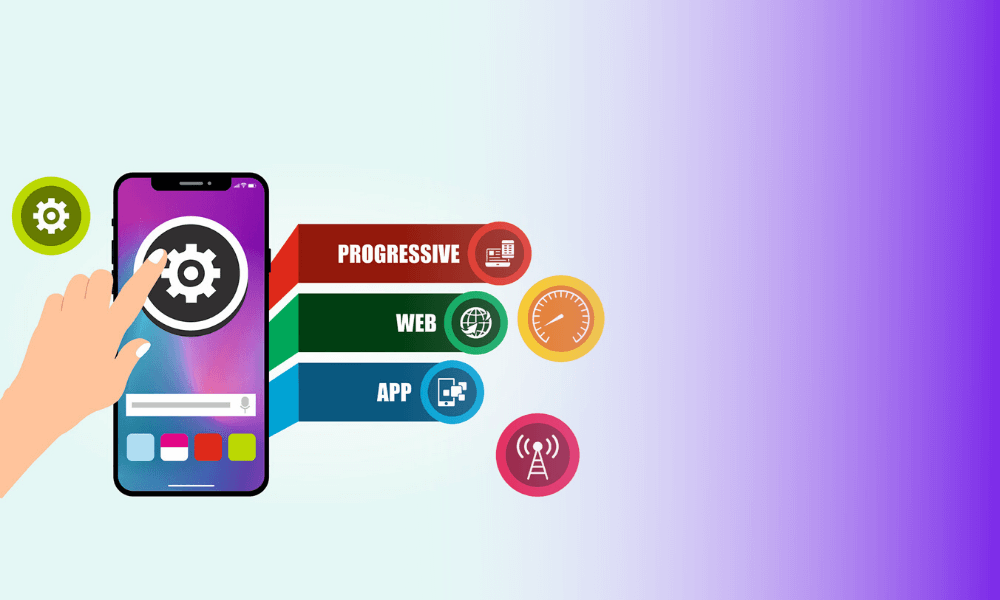As the digital landscape continually evolves, the emergence of Progressive Web Apps (PWAs) has been a significant development in modern web development practices. These innovative applications combine the best features of web and mobile applications, offering a seamless user experience.
The adaptability and performance of PWAs have sparked interest among developers and businesses alike, prompting a shift towards this technology. In exploring the realm of PWAs, one can uncover the transformative potential they hold for enhancing online interactions and reshaping the future of web development.
Advantages of Progressive Web App Development Services
Progressive Web App Development Services offer a multitude of benefits that can enhance user experience and boost business success.
By leveraging the core technology of Progressive Web Apps, businesses can create faster, more reliable web applications that work seamlessly across devices.
These services provide an opportunity for companies to reach a wider audience and increase user engagement through improved performance and offline capabilities.
Understanding the Core of Progressive Web App Technology
Progressive Web Apps offer a range of benefits when integrated with web development software. These advantages include:
- Increased user engagement
- Faster loading times
- Offline functionality
Understanding how Progressive Web App technology can enhance development services is crucial in maximizing the potential of modern web applications.
Integrating Progressive Web Apps with Web Development Software
Integrating web development software with Progressive Web Apps enhances the overall user experience and functionality of modern web applications. By utilizing the best progressive web apps and web development software, developers can create highly responsive and feature-rich applications.
Progressive web app development services offer a seamless integration process, allowing for enhanced performance, offline capabilities, and improved engagement for users across various devices and platforms.
Progressive Web Apps vs. Traditional Web Applications
When comparing Progressive Web Apps to Traditional Web Applications, key differences in design principles become apparent. Progressive Web Apps focus on providing a seamless user experience, utilizing principles like responsive design and offline functionality.
In contrast, Traditional Web Applications often prioritize functionality over user interface enhancements, potentially leading to a less engaging user experience.
Design Principles for Progressive Web Apps
As developers consider the design principles for Progressive Web Apps (PWAs), a crucial distinction arises when comparing them to traditional web applications.
One key aspect to explore is the implementation of analytics and monitoring features specific to PWAs.
Analytics and Monitoring of Progressive Web Apps
Effective analytics and monitoring are integral components of Progressive Web Apps, enhancing their performance and user experience compared to traditional web applications.
By tracking user interactions, performance metrics, and engagement patterns, developers can gain valuable insights into how their PWAs are being used.
This data-driven approach allows for continuous optimization and refinement, ensuring that the PWA delivers a seamless and engaging experience to users.

Key Features of the Best Progressive Web Apps
When it comes to the best Progressive Web Apps, optimizing user experience is paramount. These apps excel in providing seamless interactions and intuitive interfaces for users.
Optimizing User Experience in Progressive Web Apps
To enhance user experience in Progressive Web Apps, incorporating offline capabilities is crucial. The ability for users to access content even when offline ensures uninterrupted interaction with the app.
This feature is a key component of the best Progressive Web Apps, providing a seamless experience regardless of internet connectivity.
Building Offline Capabilities in Progressive Web Apps
The integration of offline capabilities is a pivotal aspect in enhancing the user experience of Progressive Web Apps. It ensures seamless functionality even in the absence of a stable internet connection. By enabling PWAs to work offline or in low-connectivity situations, users can continue to interact with the app, access content, and perform tasks without disruption.
This feature significantly improves user satisfaction and overall usability of Progressive Web Apps.
Strategies for Effective Progressive Web App Deployment
Effective deployment strategies are crucial for ensuring the success of Progressive Web Apps in modern web development. One key strategy is to prioritize performance optimization during deployment. This involves minimizing load times, ensuring smooth transitions between pages, and optimizing content delivery. By focusing on performance, PWAs can provide a seamless user experience, which is essential for user engagement and retention.
Another important strategy is to implement a robust caching mechanism. Caching allows PWAs to store data locally, reducing the dependency on network connectivity. This not only improves loading times but also enables offline functionality. By strategically caching assets, PWAs can deliver content quickly and efficiently, even in low or no network conditions.
Furthermore, adopting a continuous deployment approach can help streamline the process of updating PWAs. By automating deployment pipelines and utilizing tools for testing and monitoring, developers can ensure that updates are rolled out smoothly and efficiently. This agile deployment strategy enables quick iteration cycles, allowing for rapid improvements and bug fixes.
In addition, leveraging content delivery networks (CDNs) can enhance the performance and reliability of PWAs. CDNs help distribute content across multiple servers geographically, reducing latency and improving load times. By serving assets from the nearest server to the user, PWAs can deliver a faster and more consistent user experience.
Future Trends in Progressive Web App Development
As Progressive Web Apps continue to gain traction in the realm of web development, one of the key areas for future trends lies in enhancing the security protocols embedded within these applications.
Security considerations in Progressive Web App development are becoming increasingly crucial as users entrust more sensitive information to these platforms.
Thus, exploring advanced security measures and staying updated on emerging threats will be paramount in shaping the future landscape of Progressive Web Apps.
Security Considerations in Progressive Web App Development
When developing Progressive Web Apps, ensuring robust security measures is paramount to safeguard user data and protect against potential threats.
Implementing encryption protocols, securing data transmission, and regularly updating security patches are essential practices in fortifying the security of PWAs.
Enhancing Performance of Progressive Web Apps
In the evolving landscape of modern web development, optimizing the performance of Progressive Web Apps has emerged as a pivotal focus area for developers seeking to enhance user experience and engagement.
Techniques such as lazy loading, code splitting, and caching strategies are being increasingly employed to reduce load times, improve responsiveness, and ensure seamless functionality across various devices, ultimately leading to higher user satisfaction and retention rates.

Conclusion
In conclusion, the rise of Progressive Web Apps (PWAs) in modern web development offers numerous advantages over traditional web applications.
With their enhanced user experience, offline capabilities, and faster loading times, PWAs are becoming increasingly popular among businesses and developers.
By implementing effective deployment strategies and staying informed about future trends in PWA development, companies can stay ahead of the curve and provide users with a seamless and engaging digital experience.
How Do Progressive Web Apps Impact User Engagement and Conversion Rates Compared to Traditional Web Applications?
Progressive web apps enhance user engagement and conversion rates by offering a seamless, app-like experience, offline functionality, and push notifications. Compared to traditional web applications, PWAs provide increased interactivity and responsiveness, leading to improved user satisfaction and higher conversion rates.
What Are Some Common Challenges Faced During the Development and Maintenance of Progressive Web Apps?
Common challenges in developing and maintaining Progressive Web Apps include ensuring offline functionality, optimizing performance across devices, managing app shell architecture, handling push notifications securely, and dealing with service worker caching complexities.
How Does the Performance of Progressive Web Apps Vary Across Different Devices and Network Conditions?
Performance of progressive web apps can fluctuate based on device capabilities and network quality. Variances in processing power, memory, and bandwidth influence loading times and responsiveness. Optimizing code, assets, and utilizing caching techniques can enhance overall user experience.


